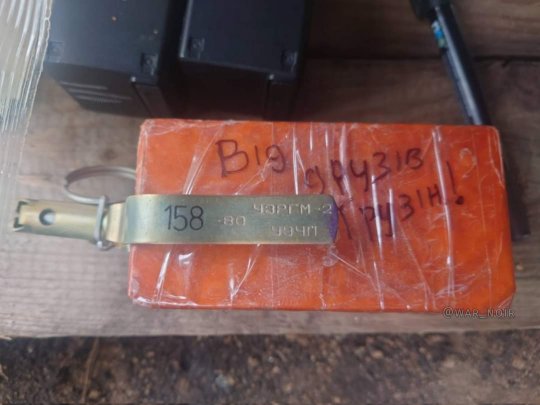#OSINT
Explore tagged Tumblr posts
Text
Want wonderful teeth like former FTX executive (sentenced to 7.5 years) Ryan Salame? Extensive OSINT reveals Dentist he went to in Hong Kong 4 years ago 😱


1K notes
·
View notes
Text
How does propaganda look like?
Let's take a look, this time at CCP propaganda.


Bloomberg and France 24 both published an article about the "success of Chinese jets used against India in the recent conflict between India and Pakistan".
Damien Symon, a globally recognized independent OSINT (Open-Source Intelligence) expert, used satellite imagery to dismantle propaganda from Pakistan and China. His findings revealed the destruction of Pakistani airbases, along with Chinese-made radars, air defense systems, and fighter jets stored in hangars, following India’s strikes.
links here and here
Maxar Technologies, a company that provides satellite imagery and data, has confirmed losses of Pakistani air assets guarded by Chinese radars and air defence.
Journalist Yalda Hakim and her Sky News team investigated terror camps in Muridke, Pakistan, uncovering evidence of their existence through social media posts linked to groups like Lashkar-e-Taiba. Their report exposed Pakistani officials’ evasive responses and lack of proof to counter claims of supporting terrorism.


The authors of the Bloomberg article changed after an update. What was the purpose of adding an Indian sounding name to the Bloomberg article when the content of the actual article didn't change?
Let's take a look at the France24 article, which claimed that Chinese jets beat French jets. It was written by reporter Leela Jacinto (who, according to France24, has won awards for her reportage)


Leela Jacinto wrote an article where she entirely dismisses the systematic, state sponsored attacks against the Hindu minority in Bangladesh after ex-PM Hasina's abdication. after having a closer look at her portfolio, it all starts making sense. 


India (and world), are you awake? The CCP has bought journalists and traditional media to parrot their propaganda. Do you understand how dangerous this is? we live in a post–truth world where fake news sell like hot cakes. it is obvious that Pakistan would never admit their defeat. They hardly admitted that they lost when East-Pakistan (Bangladesh) seceded. However, what horse in the race does the western media have in this? The west, that claims that it strives to uphold journalistic integrity, has easily sold itself to the lies of CCP. Lies which may even cost human lives. 
If you read all the way to the end, thank you so much. If you liked this blog about the Indo-Pak conflict, then I would recommend you to take a look at this and this too! 🙏🏼
#desiblr#india#hindublr#pakistan#india pakistan conflict#india pakistan#india pakistan war#operation sindoor#bunyanul marsoos#pakistani propaganda#ccp propaganda#geopolitics#propaganda war#propaganda#agitprop#journalism#5gw#desi tumblr#desi tag#desi#news#indo pak#indo pak war#osint
33 notes
·
View notes
Text

Breaking: Pentagon insists it only uses verified Twitter accounts for airstrike tips
#america#united states#usa#us military#military#osint#yemen#houthis#war crimes#war#foreign policy#open source#airstrikes#trump#donald trump#trump administration#politics#current events#news#usa news#wtf#internet culture#tumblr discourse#america moment
38 notes
·
View notes
Text




The Fanta Bomb & Improvised Munitions in Ukraine
Improvised munitions including grenades have appeared in Ukraine over the past 12 months. They are often based on drinks cans or bottles and are filled with readily available explosive materials and in some cases fragmentation material for an increased anti-personnel effect. In this video, we look at various types of improvised munition which have been observed in the field.
Check out the video below:
youtube
Check out the full accompanying article here.
#Ukraine#Ukraine War#Improvised Grenades#Bottle Grenades#Can Grenades#Military#OSINT#Grenades#Youtube
391 notes
·
View notes
Text
hi tuglr i wrote about how i solved an OSINT challenge posted by @rhinozzryan !! it was my first time doing any genealogy work, but i had tons of fun with this one c:
y'all should give it a try if u have some spare time and want to learn a bunch about people who died a few centuries ago, its actually enjoyable :3 https://versary.town/blog/breakdown-of-a-geolocation-genealogy-challenge/
175 notes
·
View notes
Text
If I’m being honest, the most useful skill for hacking is learning to do research. And since Google’s search is going to shit, allow me to detail some of the methods I use to do OSINT and general research.
Google dorking is the use of advanced syntax to make incredibly fine-grained searches, potentially exposing information that wasn’t supposed to be on the internet:
Some of my go-to filters are as follows:
“Query” searches for documents that have at least one field containing the exact string.
site: allows for a specific site to be searched. See also inurl and intitle.
type: specifies the tor of resource to look for. Common examples are log files, PDFs, and the sitemap.xml file.
Metasearch engines (such as SearxNG) permit you to access results from several web-crawlers at once, including some for specialized databases. There are several public instances available, as well as some that work over tor, but you can also self-host your own.
IVRE is a self-hosted tool that allows you to create a database of host scans (when I say self-hosted, I mean that you can run this in a docker container on your laptop). This can be useful for finding things that search engines don’t show you, like how two servers are related, where a website lives, etc. I’ve used this tool before, in my investigation into the Canary Mission and its backers.
Spiderfoot is like IVRE, but for social networks. It is also a self-hosted database. I have also used this in the Canary Mission investigation.
Some miscellaneous websites/web tools I use:
SecurityTrails: look up DNS history for a domain
BugMeNot: shared logins for when creating an account is not in your best interest.
Shodan/Censys: you have to make an account for these, so I don’t usually recommend them.
OSINT framework: another useful index of tools for information gathering.
40 notes
·
View notes
Text
Mapping control in Syria at this exact moment of disarray is unrealistic, and any attempts are likely misleading. But here's our new map showing the last day of resistance before Assad's govt collapsed.
Concise summary of events and detailed timeline included.
#syria#syrian civil war#syria war#map#maps#geography#cartography#geopolitics#world#politics#polgeonow#security#osint#middle east#we love maps#mapping#conflict map#conflict mapping#conflict tracking#international#war#civil wars#humanitarian#mediteranean#welovemaps#bashar al assad#assad
5 notes
·
View notes
Text
2024 Supported Org: Bellingcat
Over the past two decades, the American public's faith in mainstream news organizations has dropped precipitously -- in a Gallup survey last year, more than half of respondents indicated that they believe news organizations actively mislead the public. The major organs of mainstream media have made many choices that have cost them the public's trust, often relying on the "both sides" model of reporting at the expense of a full and truthful picture and treating politics as a horse race.
But these organizations are also under significant pressure as they struggle to adapt to the radical technological shifts in our media environment. These shifts have cut into traditional revenue streams, driving news organizations toward the sort of reporting that will generate revenue. They have also created both the possibility of and the need for new approaches to reporting, and many legacy news outlets have struggled to adapt.

Bellingcat is an independent investigative collective of researchers, investigators and citizen journalists that uses cutting-edge technology to engage in fact-checking and open-source intelligence investigation outside the apparatus of major journalistic publications. In addition to doing their own reporting, Bellingcat designs and shares verifiable methods of ethical digital investigation. By publishing walkthroughs to open source research methods and holding tailored training sessions on their use for journalists, human rights activists, and members of the public, they’re broadening the scope and application of open source research. Their research is regularly referenced by international media and has been cited by several courts and investigative missions.
Operating in a unique field where advanced technology, forensic research, journalism, transparency and accountability come together, Bellingcat believes in the need for collaboration and has partnered with news organisations across the globe. Likewise, Bellingcat’s Global Authentication Project (GAP) seeks to harness the power of the open source community by nurturing and encouraging a network of volunteer investigators. Their Justice & Accountability unit, meanwhile, seeks to demonstrate the viability of online open source information in judicial processes.
You can support Bellingcat as a creator in the 2024 FTH auction (or as a bidder, when the time comes to donate for the auctions you’ve won.)
#fth 2024#fanworks charity auction#supported org#bellingcat#investigative journalism#transparency#OSINT
18 notes
·
View notes
Text
Spacex.... BIG GOALS!!!
youtube
🚀 🔥🍌
#gwynne shotwell#spacex#elon musk#musk#starship#interplanetary travel#leo#low earth orbit#banana for scale#🍌#tony stark#the emperor has no clothes#hyperloop#the boring company#co2 emissions#climate change#climate crisis#osint#tsla#corporations#ceo#elongated muskrat#elon muskrat#the muskrat#apartheid clyde#las vagas#boca chica#thunderf00t#youtube
3 notes
·
View notes
Text
Mastering OSINT: The Power of Open-Source Intelligence
Open-Source Intelligence (OSINT) is the art of gathering publicly available information from various online sources. Whether for cybersecurity, investigations, or research, OSINT provides valuable insights. In this blog, we’ll explore key OSINT techniques, tools, and best practices. 1. Sock Puppets: Creating an Anonymous Identity A sock puppet is a fake online identity used to gather…
#AI#chatgpt#coding#css#emails#hack#javascript#new#osint#osint-tools#programming#python#reverse-image-searching#search-engine#sock-puppet#tech#trending#truecaller#usernames
2 notes
·
View notes
Text
Type 093B Nuclear Attack Submarine
We've got new photos of China's new SSN Type 093B, it's propulsion is a pump-jet (sub may be longer due to this) and it's classified by the USN (US Navy) as a SSGN because it has cruise missile compatibility.
The image is, not the best quality due to distances but Hurin92 linked it and they're one of the best watchers of these things over on twitter.
It's a neat design, assumption is production of them stands at now 7 (or 8?) in use either on trials or service. Another stepping stone in the Chinese Navy's long history.

4 notes
·
View notes
Text
NS OSINT challenge

Kan jij erachter komen waar deze foto genomen is?
Handig met computers en wil jij graag helpen om miljoenen reizigers te vervoeren? Kijk op werkenbijns.nl
7 notes
·
View notes
Text



Turkish Heavy Machine Guns in Ukraine
Turkey has provided a huge range of military equipment to Ukraine, in this video we'll look at Turkish-made M2 heavy machine guns and an unusual rotary grenade launcher in service with the Ukrainian Armed Forces.
youtube
Check out the accompanying article here.
#Ukraine War#M2 Browning#Machine Guns#Heavy Machine Guns#OSINT#Ukraine Russia War#Ukraine Conflict#Youtube
99 notes
·
View notes
Text
Take this as a reminder to update your passwords, and if you use basically the same password for everything get in *the jar*
#tech support#it#osint#cyber security#password#i know you exist you motherfuckers#and i will IT the fuck out of you
3 notes
·
View notes
Text
In light of the escalation of state violence at several protests, I have elected to release my findings on the Canary Mission here.
The canary mission is a shady group of Zionists that doxx activists and students that express support for Palestine in an attempt to silence, intimidate, and defame them.
Some time ago, I was able to link the organization to one Howard David Sterling, an American lawyer who invests in Israeli medical firms. I wrote the report on my site here.
More recently, I found the account that runs their tip submission form. The username was included in the resource URL of the banner image of the form, which is hosted on a service called jotforms, under the username “carlossantanajm”
A google dork turned up two potential candidates: a man from eastern Canada, and a the rock musician Carlos Santana, who played a concert in Israel around 2010 despite backlash. Investigation is underway to conclusively prove the involvement of either of these individuals, but data is scarce.
Also of note was an investigation by Josh Nathan-Kazis into Megamot Shalom: an elusive organization that acts as a front for the Canary Mission. In the report, data from the Israeli charity register is cited but not provided to prove connections between Megamot Shalom and Aish HaTorah, an organization that focuses on pro-Israel media advocacy.
Funding for Megamot Shalom is contributed by wealthy zionists in the US, through the Central Fund for Israel, which routes the money to the Israeli organization so that the donors can claim it on their tax breaks. The connection between the Central Fund for Israel and Megamot Shalom was confirmed by the 2017 Tax returns of the Hellen Diller Family Foundation, who donated to CFI and labeled the reason as “CANARY MISSION FOR MEGAMOT SHALOM”
Two anonymous sources claim that a man named Jonathan Bash (who has ties to Aish HaTorah) confided in them that he ran the Canary Mission. From this info, six other Megamot Shalom board members were able to be named.
Efforts are Still underway to obtain the charity data cited in the report.
More to come soon, for updates follow the #opmonoxide tag.
16 notes
·
View notes